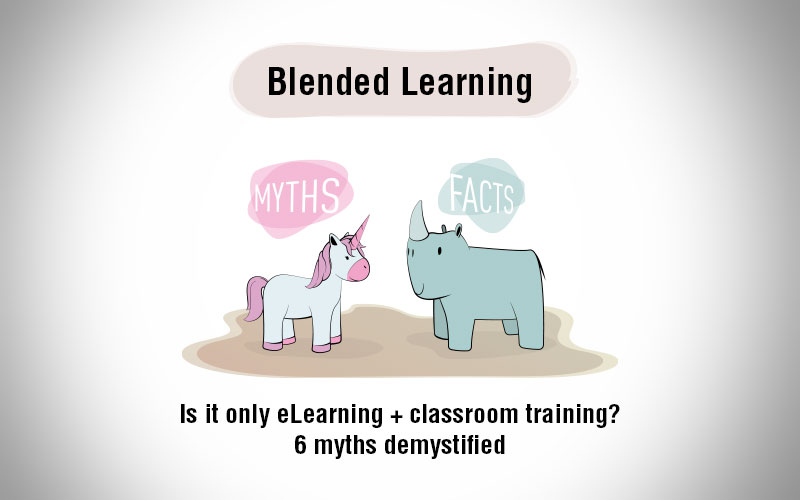Blended Learning – An Ideal Corporate Training Solution?

More and more organizations today are migrating to eLearning, from the traditional form of training, considering all the benefits eLearning has to offer. But, should eLearning be a replacement for classroom training? Think about your employees. Will they be able to embrace this drastic change at once? What about the not-so-tech-savvy employees?
While I agree that eLearning offers way too many benefits, classroom training has its unique place. In fact, it gave us great results all these years. So what about its benefits? Leveraging the benefits of both training methods could yield you better results than that just one. Yes, you read it right. Such a method of training is called blended learning.
What is blended learning?
A training strategy which gives you the flexibility and convenience of learning anytime, anywhere, by involving more than one training method, to teach a particular subject, is called blended learning.
If your question is to blend, or not to blend, here a few benefits of blended learning for corporate training.
1. Provides Flexibility
Blended training provides trainers the flexibility in the way they present the training content. They can present complex content in a classroom, where they can give proper explanation for the concepts being presented and also answer the questions of learners. They can also make use of different multimedia such as videos, graphics, or web links, to support their explanation. Theory and practice exercises can be offering through e-learning.
2. Address Different Learning Styles
Every person learns differently; we all have our unique learning styles. Some of us might learn through visuals, while others might prefer a hands-on training approach. Adopting the blended training approach will allow you to cater to the various learning styles of your employees. For example, learners who like a collaborative learning experience will have classroom training sessions, and introverts can learn independently through online courses.
3. Lowers Training Costs
We all are familiar with the expenses involved in traditional training – instructor fees, travel and accommodation cost, and also the venue cost. How can we forget pulling employees away from work, which also consumes quite a lot of their valuable time?
When you blend training methods, these expenses and time involved in traditional training are brought down, because a considerable portion of the training content goes online and becomes self-paced. You might say that developing eLearning also costs you dollars. But, wouldn’t that be a one-time investment?
4. Tracks Employee Progress
While hands-on training helps you see how well your employees are able to perform their job tasks, a Learning Management System (LMS) helps you track how much training each employee has undergone. You can also see how each employee is performing with online assessments. This analysis will help you understand which training format is successful and which one needs to be improved.
With a blended training approach, you leverage the benefits of technology-enabled learning, while continuing using traditional methods. It also helps you make a safe move toward eLearning, without expecting employees to deal with a big change.



![What Exactly is the Bookend Blended Learning Model? [SlideShare]](https://blog.commlabindia.com/hubfs/Imported_Blog_Media/blended-learning-bookend-model-slideshare.jpg)

